Sing it with me… “don’t cry for me Argentina!” (I apologize in advance for the earworm.)
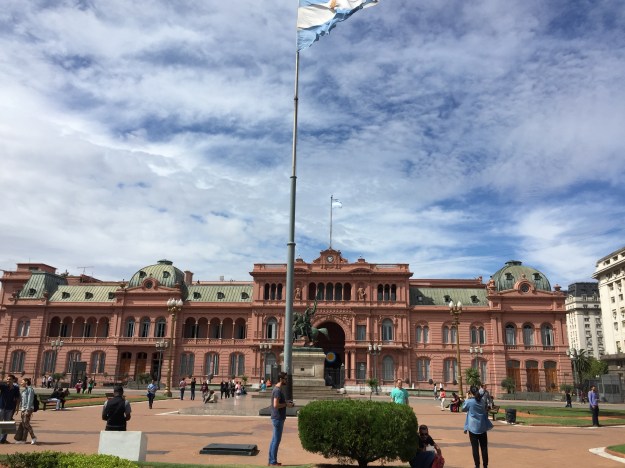
Eva Peron (AKA Evita), the working-class first lady who’s been described as Princess Di and Jackie Kennedy rolled into one, used to hang out of that balcony under the flagpole of the Casa Rosada in Buenos Aires. (Or was it Madonna in “Evita?”) It’s the executive mansion and president’s office, right in the middle of the city.
The “Pink House” is plenty pink, but looking at the color of that sky, I thought it must be the inspiration for the light blue and white of Argentina’s flag.
My husband and I, being ancient parents, decided long ago that we don’t want our son looking back on school vacation with visions of Orlando. So we cashed in our miles to leave chilly New England “spring” behind and step off the plane into the late Argentine summer.
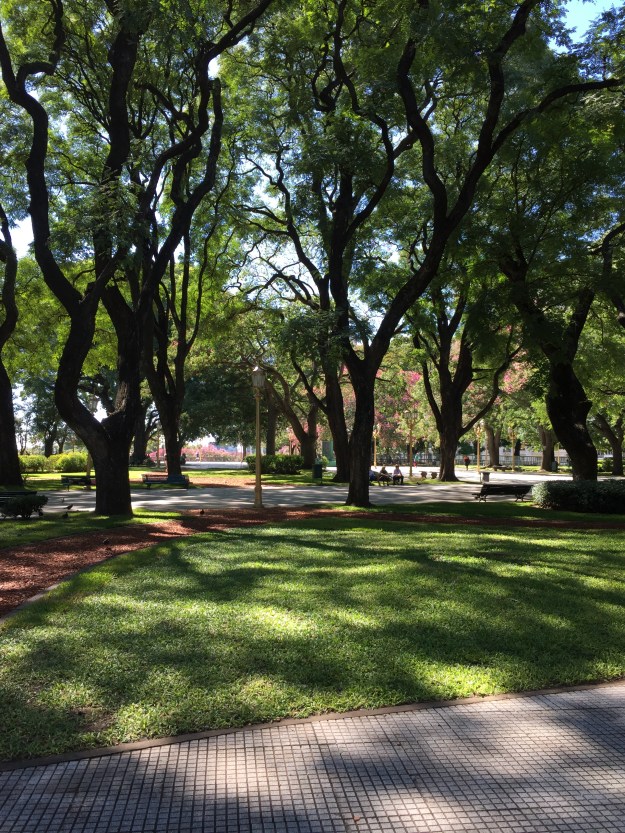
People from the U.S. tend to ignore South America, or think of it as a place where there’s a giant rain forest with deadly snakes, Rio where Carnival is happening 24/7, Mayan ruins with too many steps, and a bunch of drug lords acting like the Godfather. (Which just goes to show how provincial the U.S. can be.) When I was in school, I think we learned about it in geography once, and that was about it.
We tend to be surprised to learn that Buenos Aires, the “Paris of South America,” could look like this:

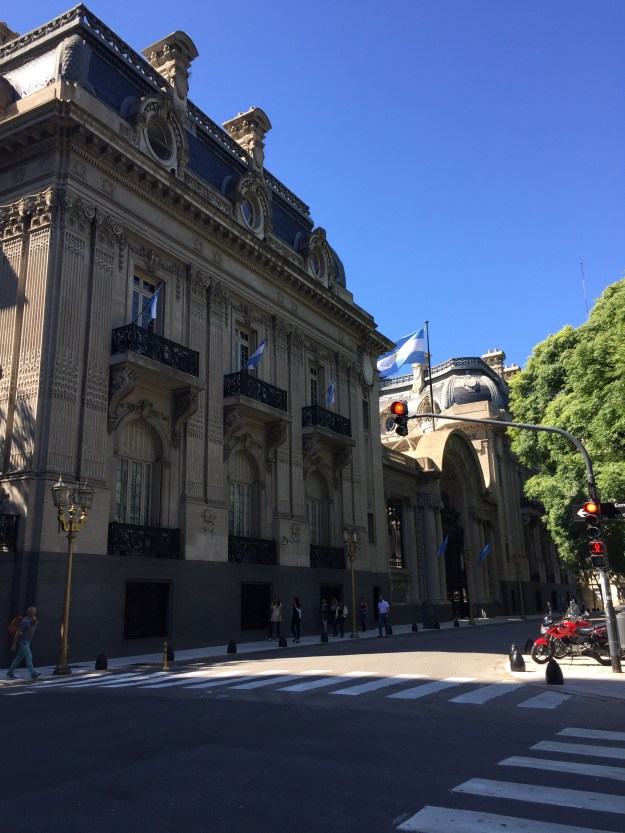
Most of the city looks very European, but the architecture tends to be super-sized.This building was based on Dante’s Divine Comedy, with hell on the bottom and paradise on the top. 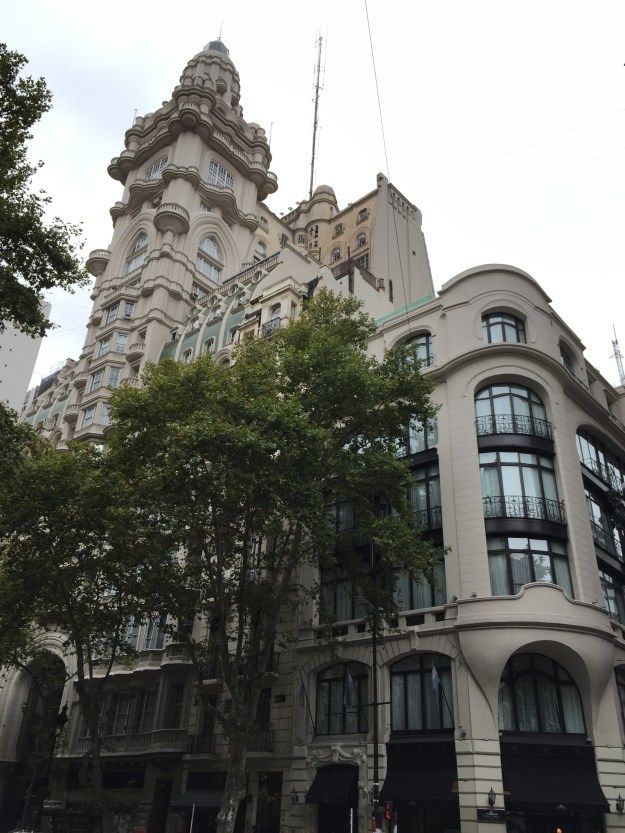
(Hm, hell’s a lot bigger than paradise, isn’t it?)
Though Buenos Aires was once a Spanish colonial backwater, from the 1880s through the 1930s it became a country of immense wealth from meat and grain exports. So the rich families built up the city in a mix of faux Paris, belle epoch, Art Nouveau and Art Deco style. Back then if you had loads of money, in Europe they would say you were “rich as an Argentine.”
Visual art is everywhere – with huge paintings on the sides of buildings:
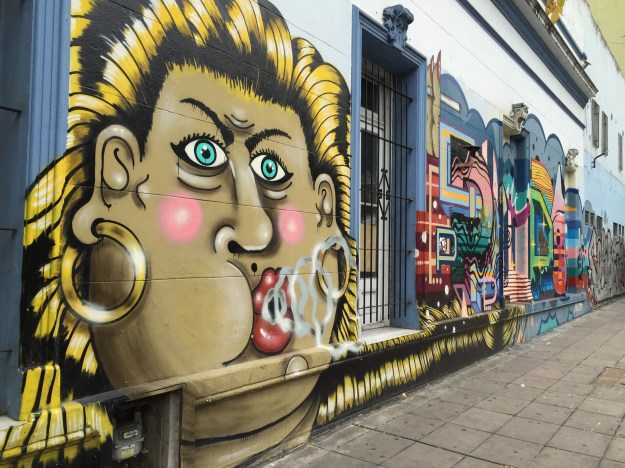
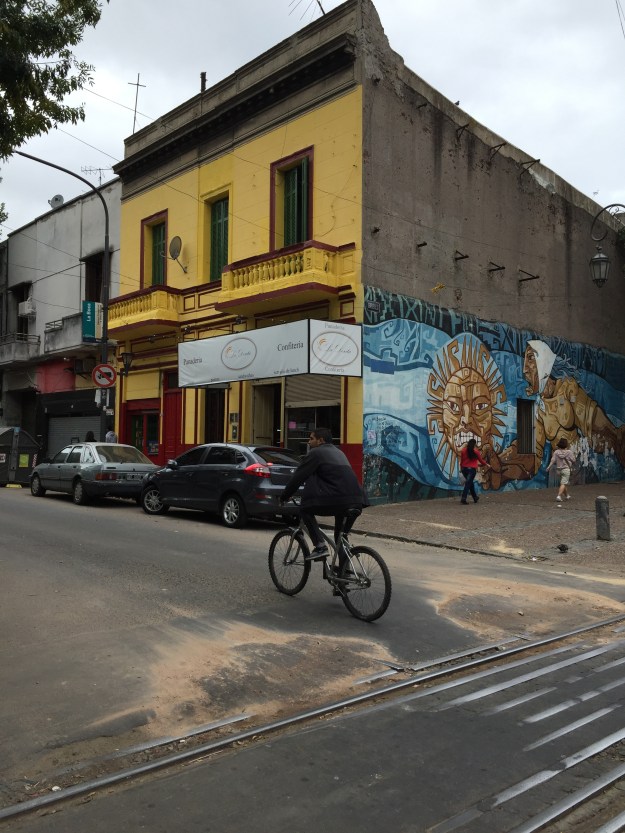
And unusual mosaics in the old buildings and the subway, which is clean and relatively safe:
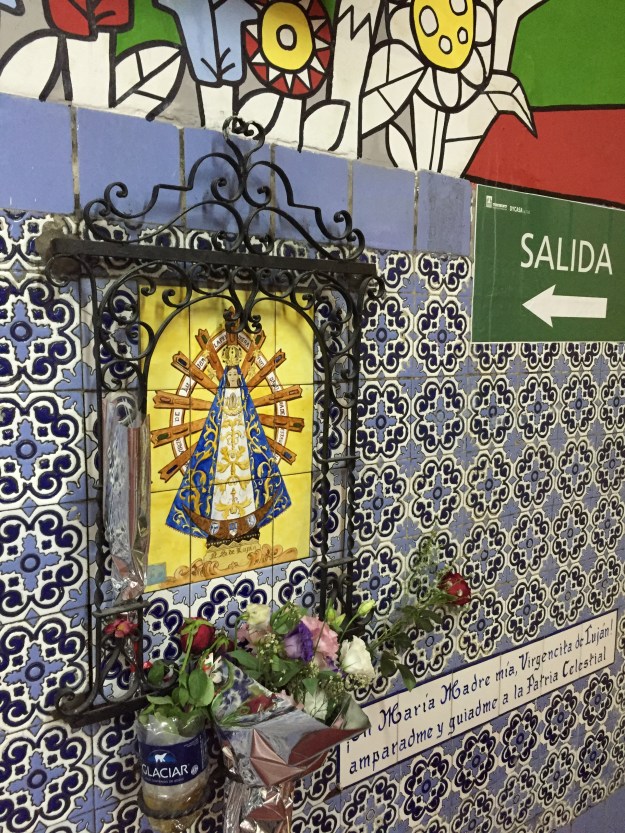
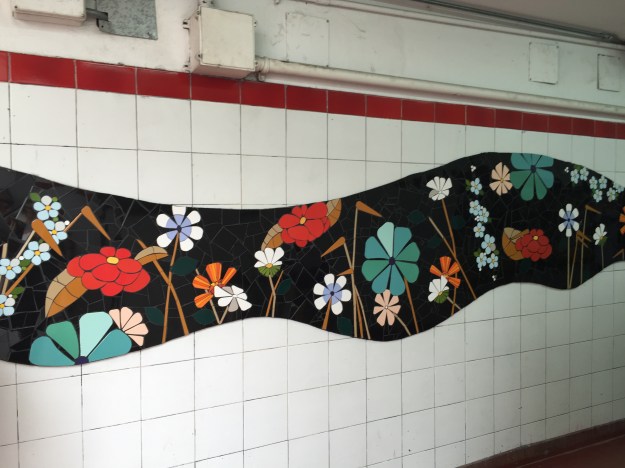
This is the floor of the Teatro Colon, the 1908 opera house that hosted the great performers of the 20th century.
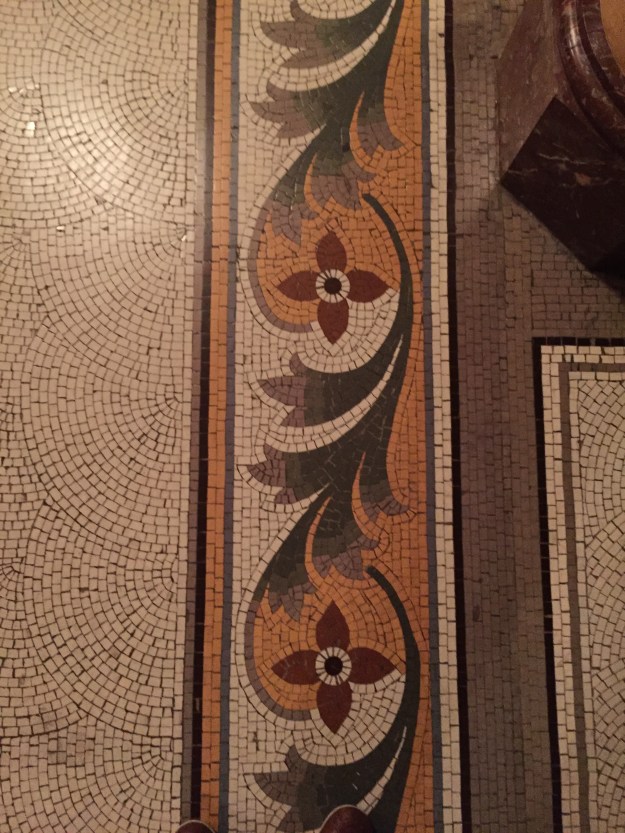
And here’s the rest – it rivals the Garnier in Paris and La Scala in Milan.
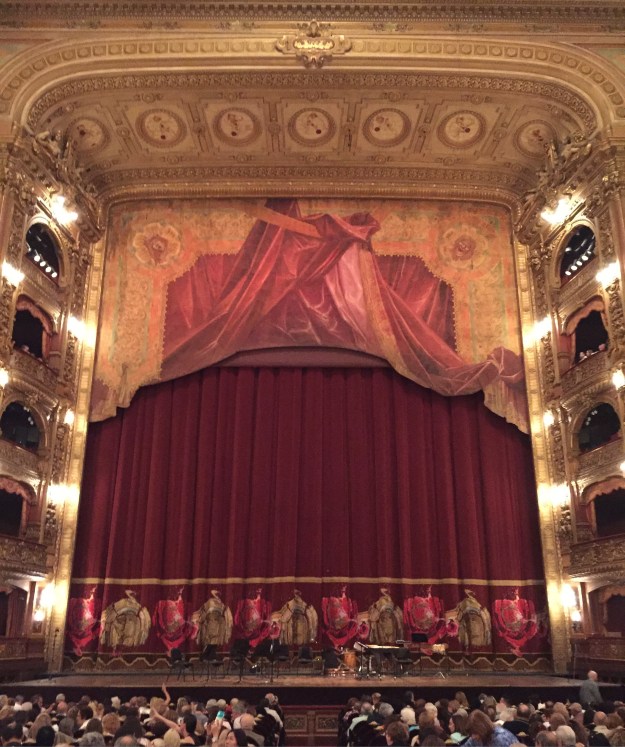
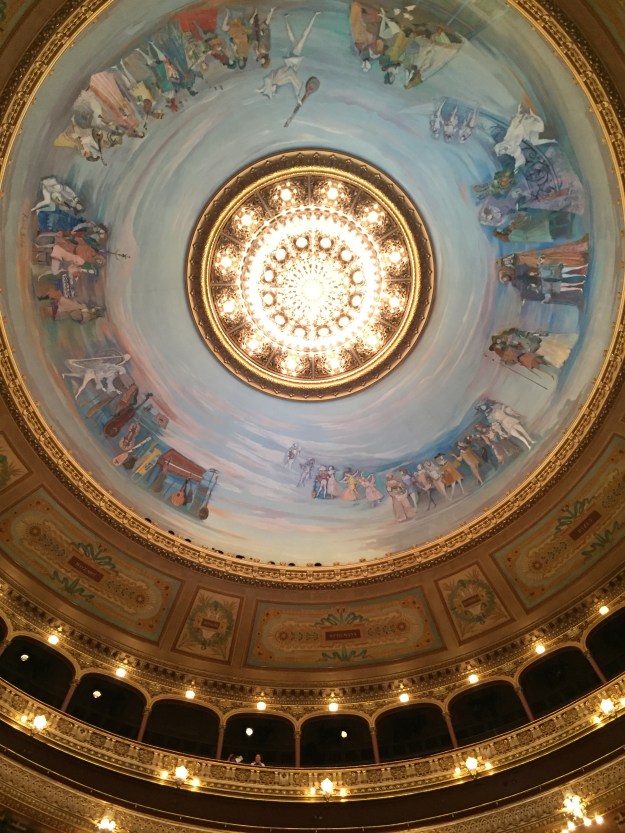
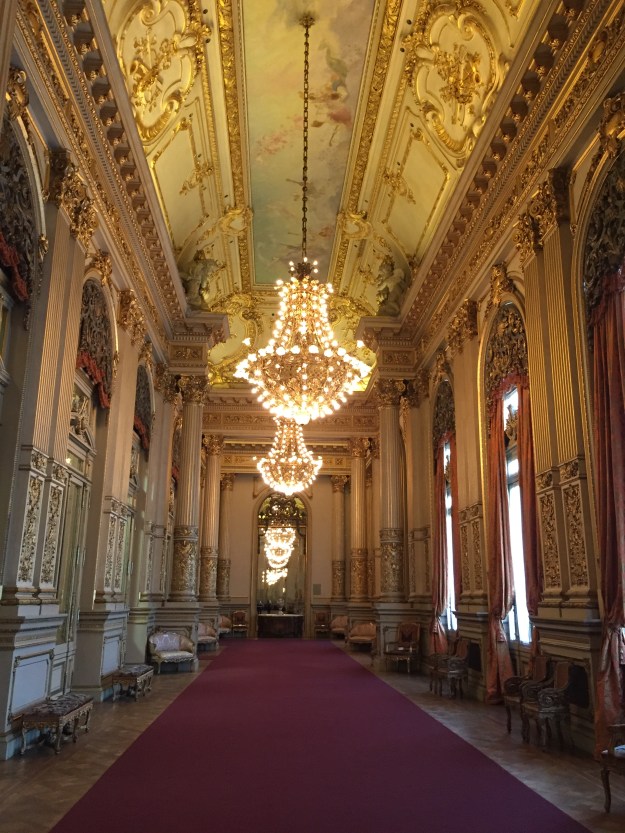
I really liked the Art Nouveau velvet curtains leading into the orchestra seats:
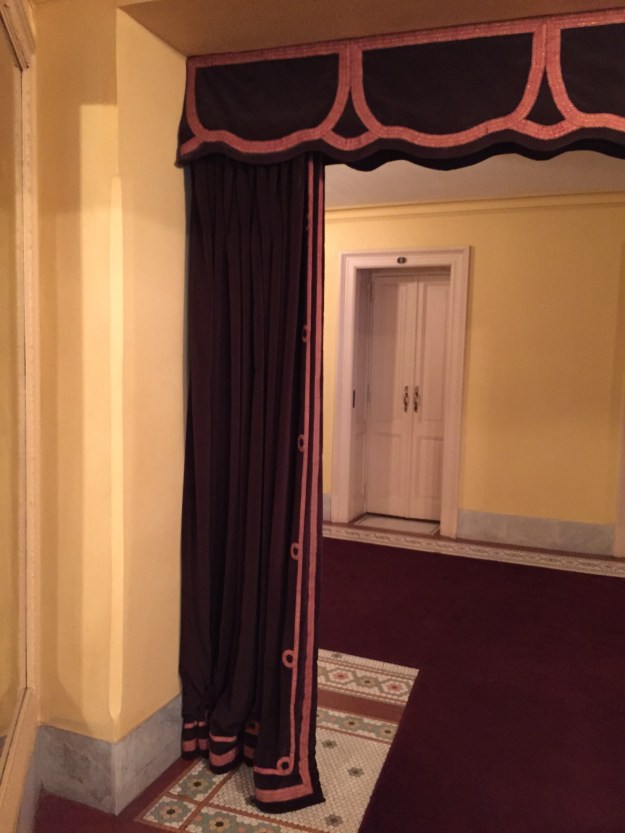
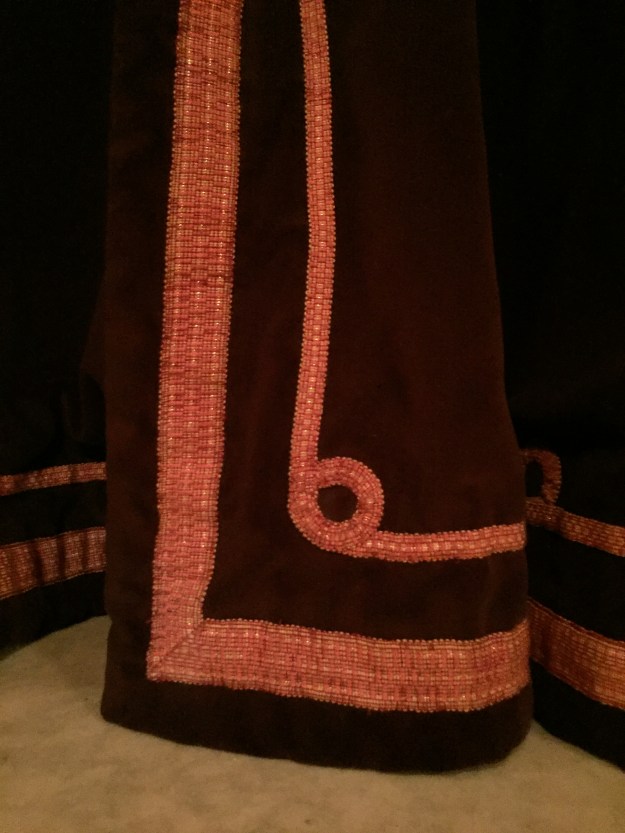
And the modern textile art on the curtains, a mixture of appliqué and embroidery:
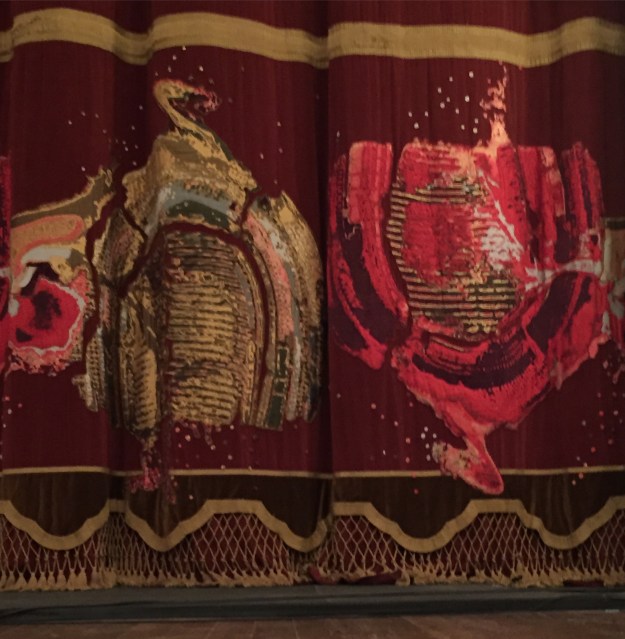
Check out the Art Nouveau detail at the entrance:
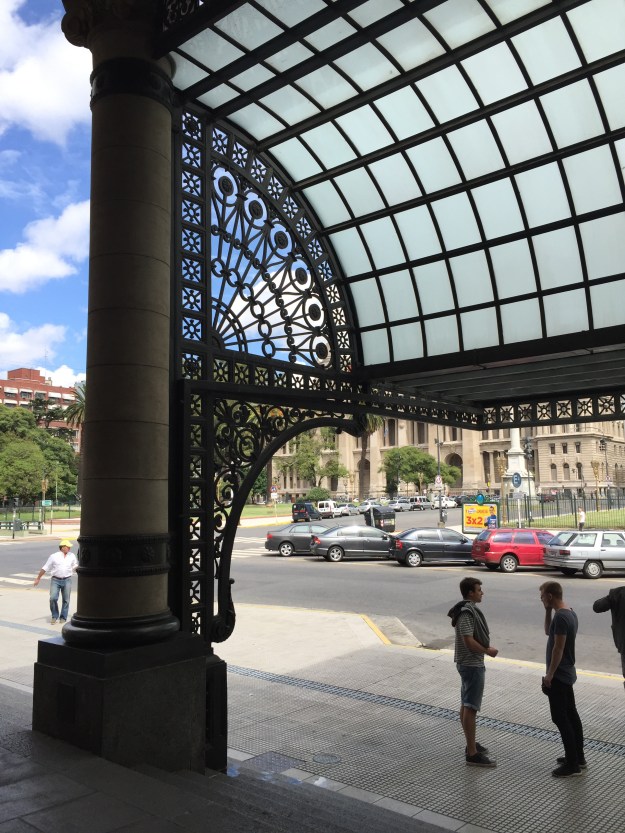
And how about this ornate movie house, converted into a bookstore?
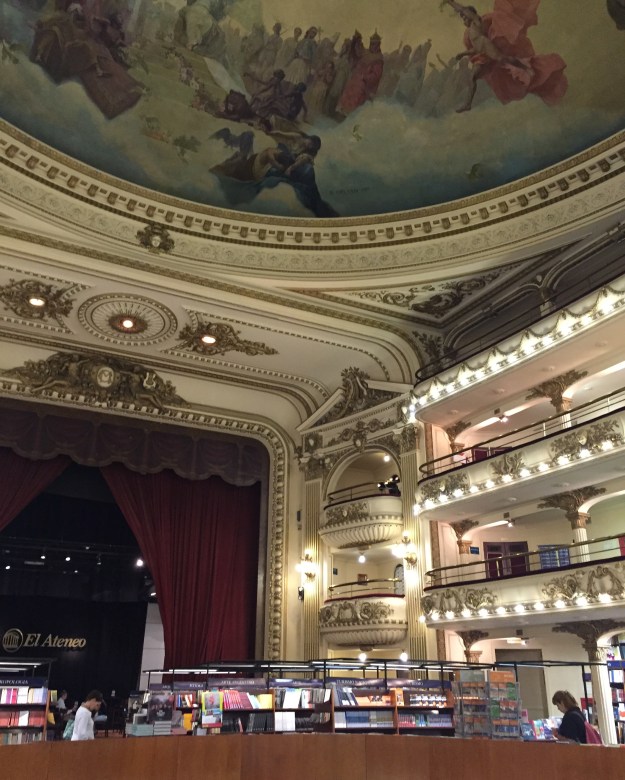
The Portenos are sophisticated like Europeans, but not as, um… well I know I have a lot of European readers, so how can I say it – brusque? There’s a certain New World friendliness, and people were extremely helpful to someone like me who’s walking around with no Spanish other than the words I picked up watching “Dora The Explorer” with my son. (Note to Dora – middle-aged women are watching. Teach us how to say “where’s the bathroom?”)
I had read about the fabric shopping in B.A. being so-so, from Melanie of the blog Poppykettle and Sarai from Coletterie. When I got to the small fabric district in a not-so-great neighborhood, it was filled with small shops, many just too jumbled for me to pick through.
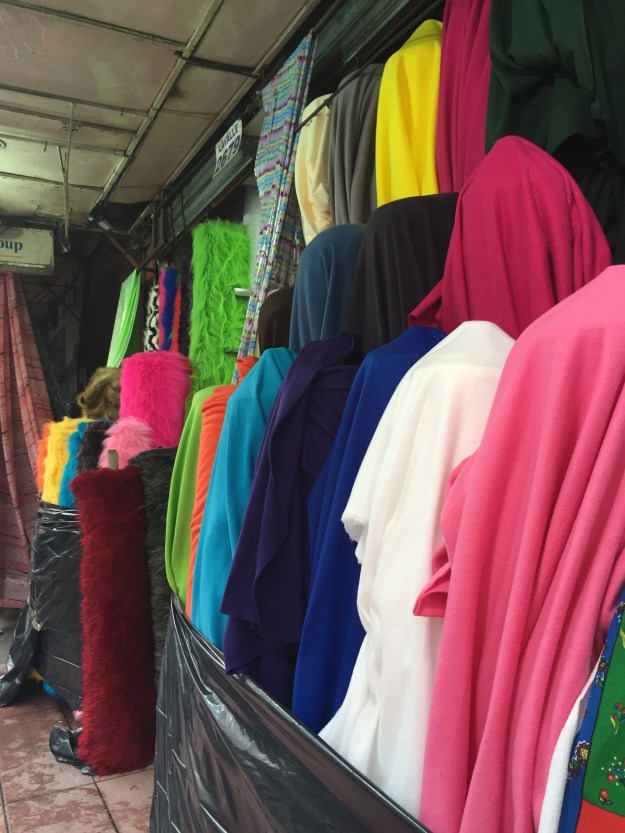
(With as much fleece as JoAnn’s.)
There were a number of shops selling lace and notions made in Argentina, but most were wholesale only.
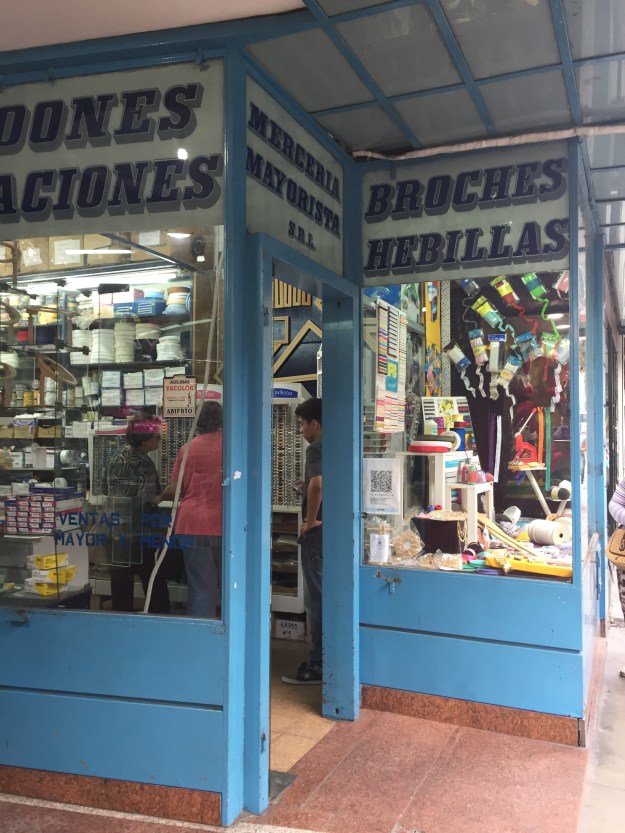
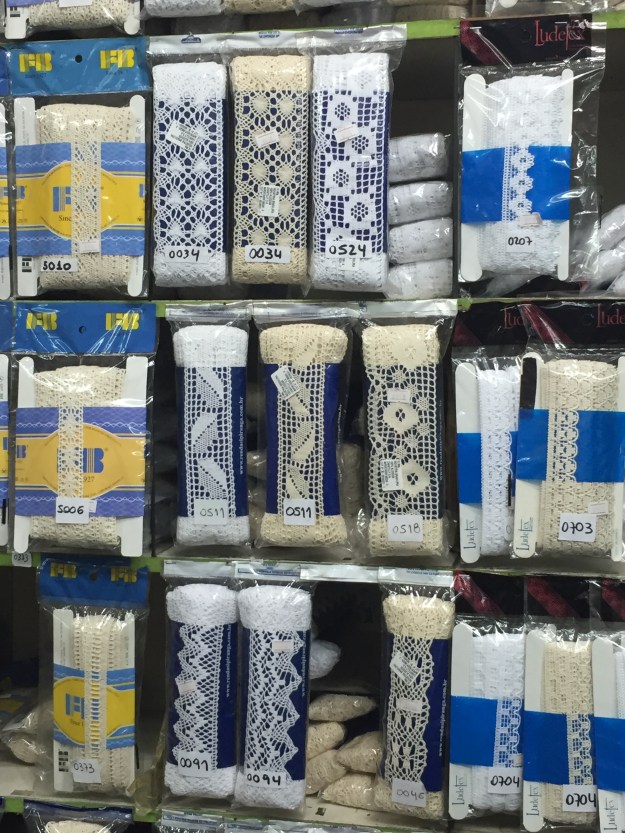
About to give up, I went into the one store with more of a modern “retail” environment, called “Don Boton” (2611 LaValle St.). And I’ll admit I went a little crazy. Beaded trims:
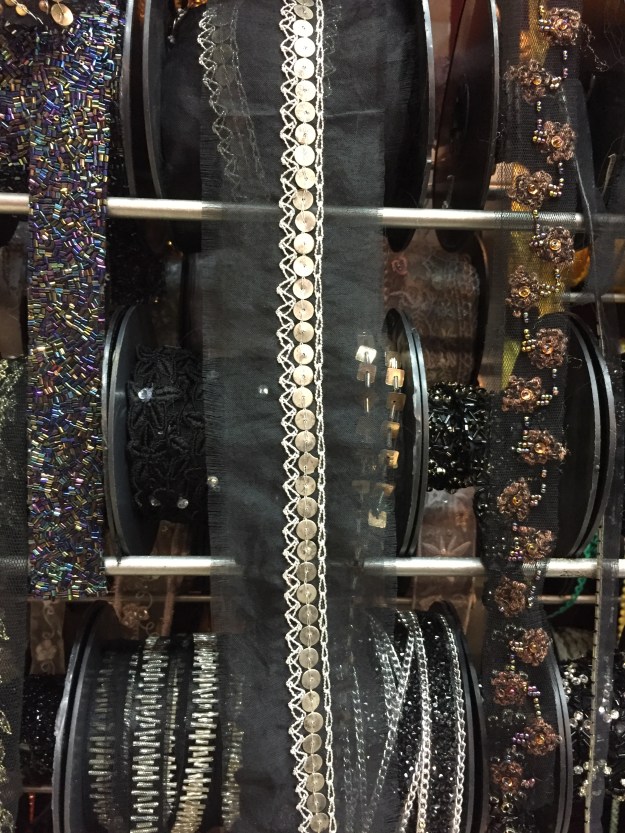
Ruffled elastic:
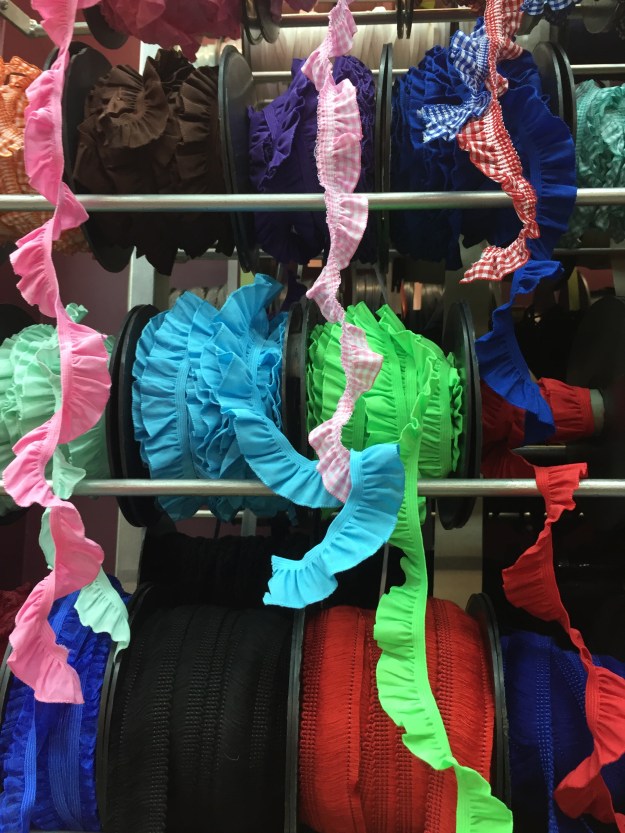
Leather and faux leather trims and cords:

Pompoms:
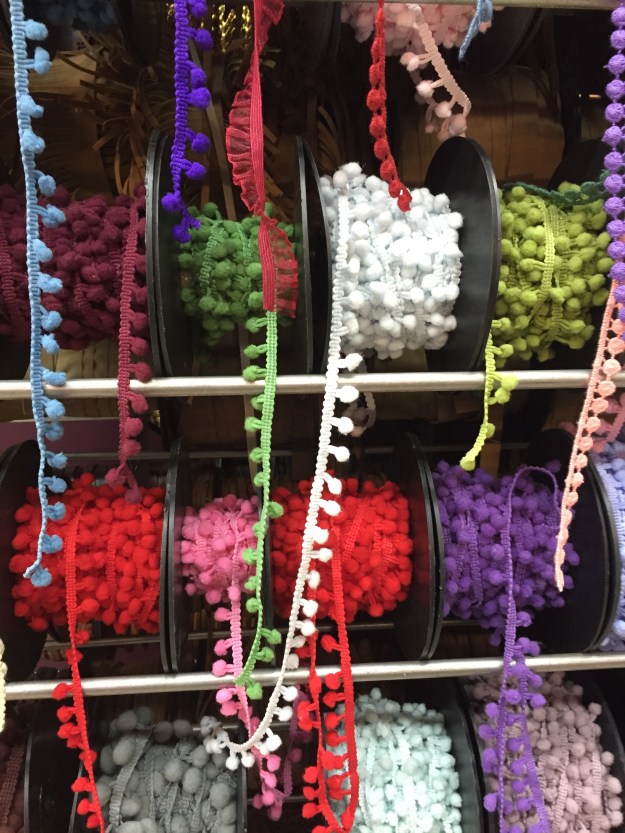
Fake fur and feathers, for when I pioneer “Old Babe” burlesque:
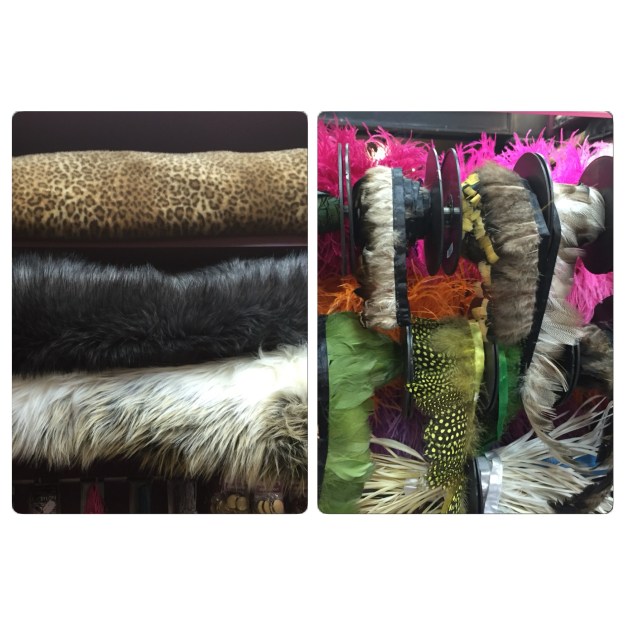
And lots of buttons! So this happened:
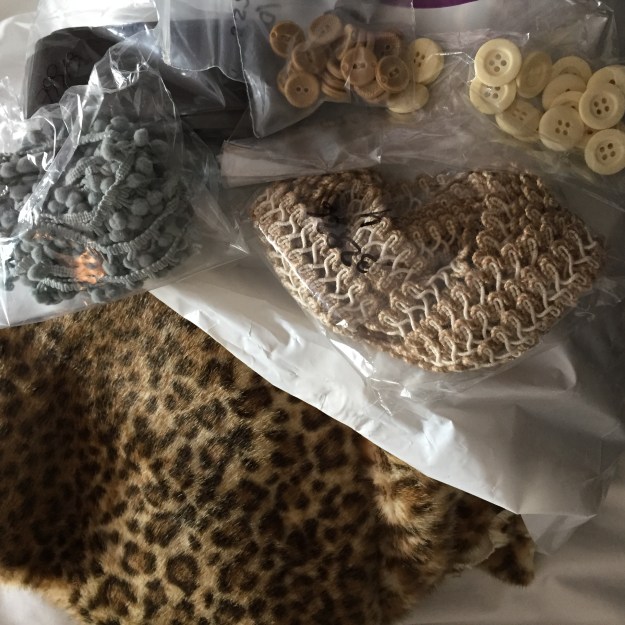
(I’m going to be consulting Kenneth King’s “Smart Sewing with Fake Fur” DVD to figure out how to sew that retro faux fur. It’s really soft and backed with a knit.)
After that, I needed some refreshment at the legendary Cafe Tortoni, from the 1860s.
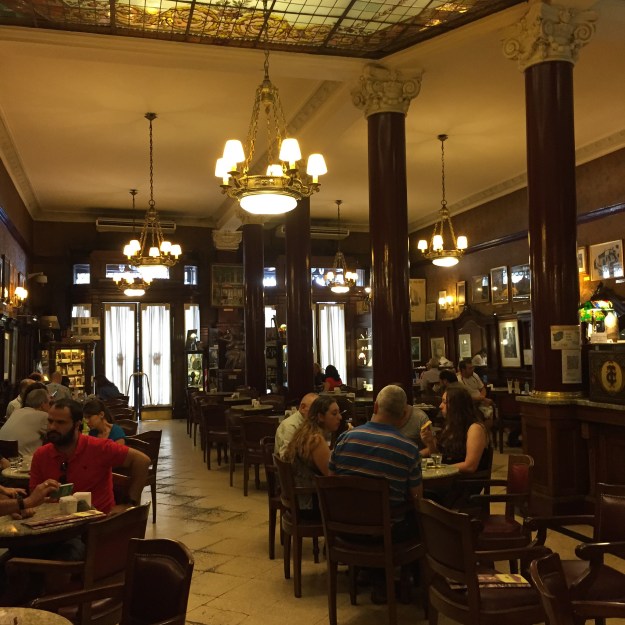
When my husband and I were here 30s years ago, there was a much more “lost in time” feeling to Buenos Aires, and a big afternoon cafe society. It’s nice to see that this cafe still exists.
On Sunday, we visited the antiques fair in the old square in the San Telmo district, with a mixed bag of antiques vendors, tango dancers, and fairly touristy “Becky Home-Ecky” handicrafts.
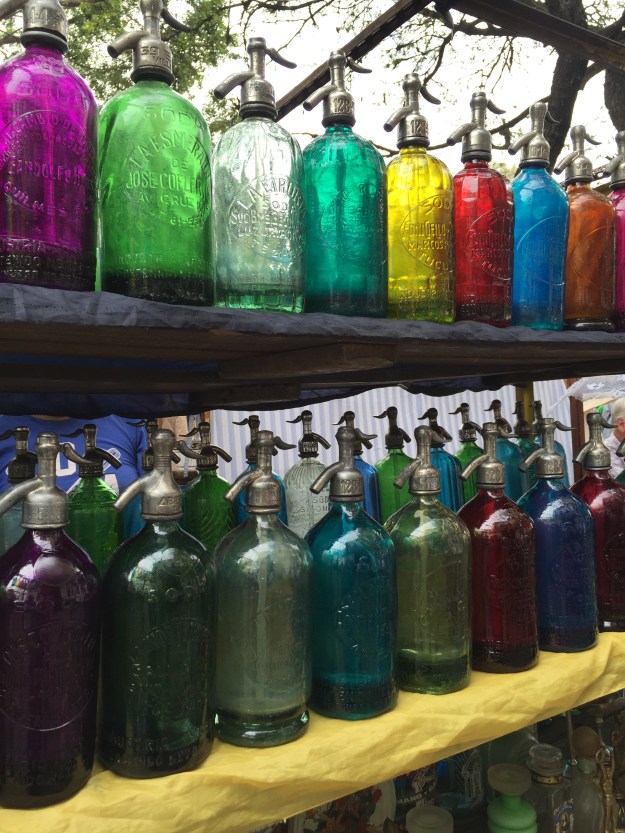
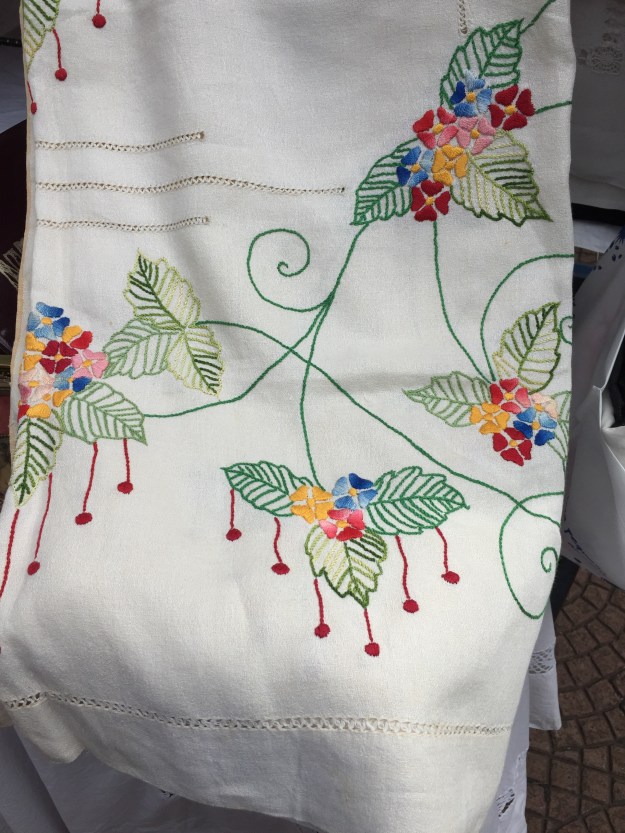
We were about to leave empty-handed, until my Art Deco husband dove headlong into a booth of vintage buttons:
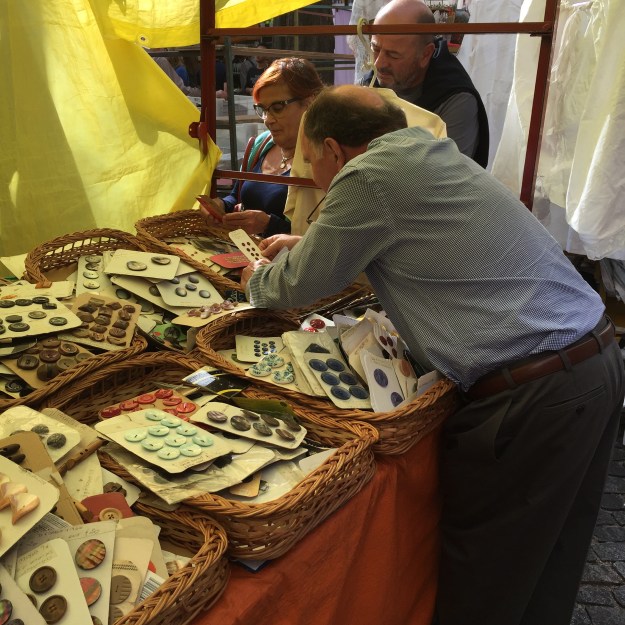
Good going, hon!
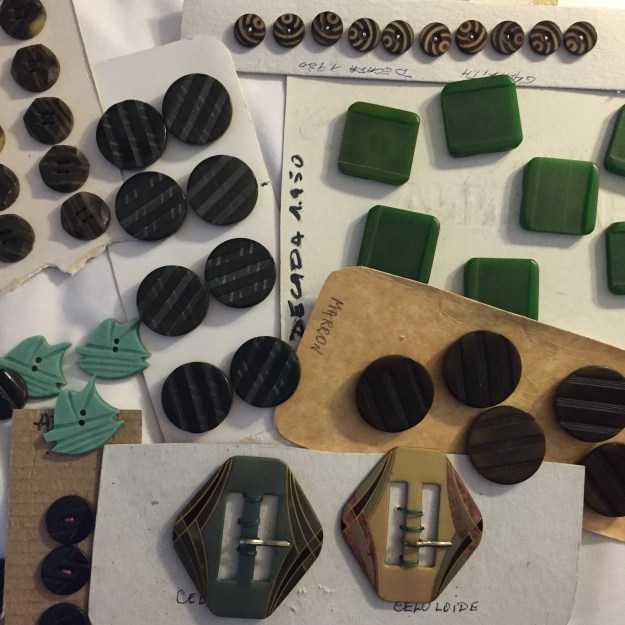
We stayed in a classy and modern boutique hotel, Fierro Hotel, in the “Palermo Hollywood” area, a quiet part of town with a number great restaurants within walking distance. Their staff found us an excellent English guide who took us walking around the Recoleta cemetery, which is full of “mini-mansion” marble crypts. 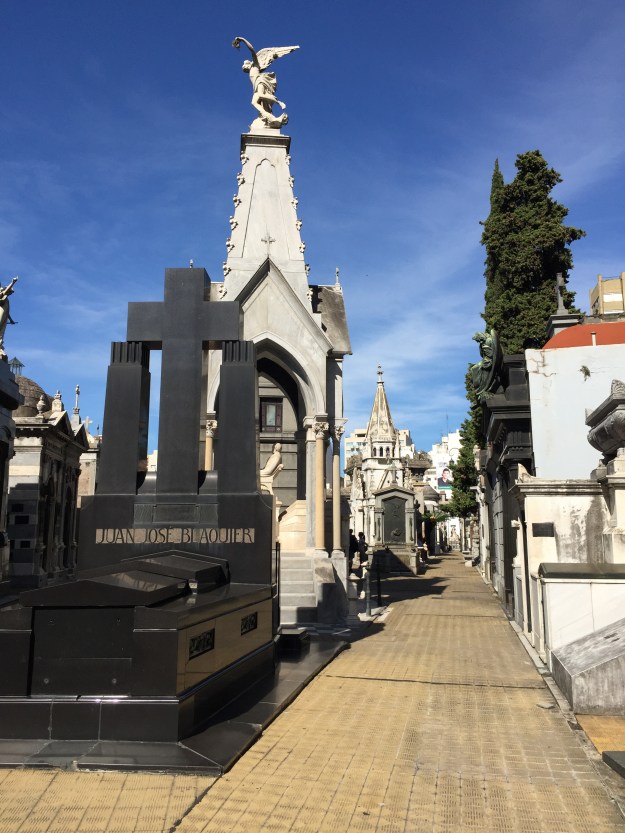
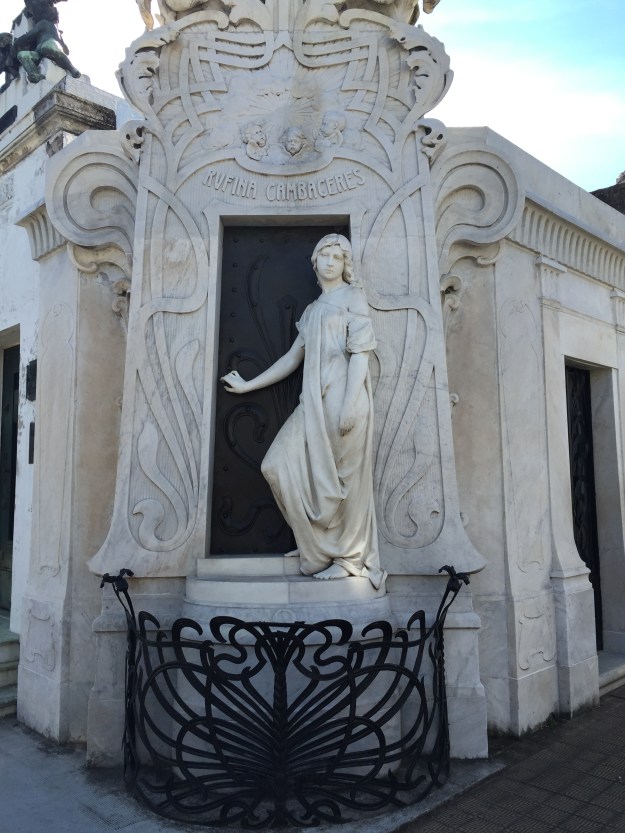
(At 19, the girl above went into a catatonic state and then was mistakenly buried alive. Just in case you’re looking for a subject for a creepy Edwardian novel.)
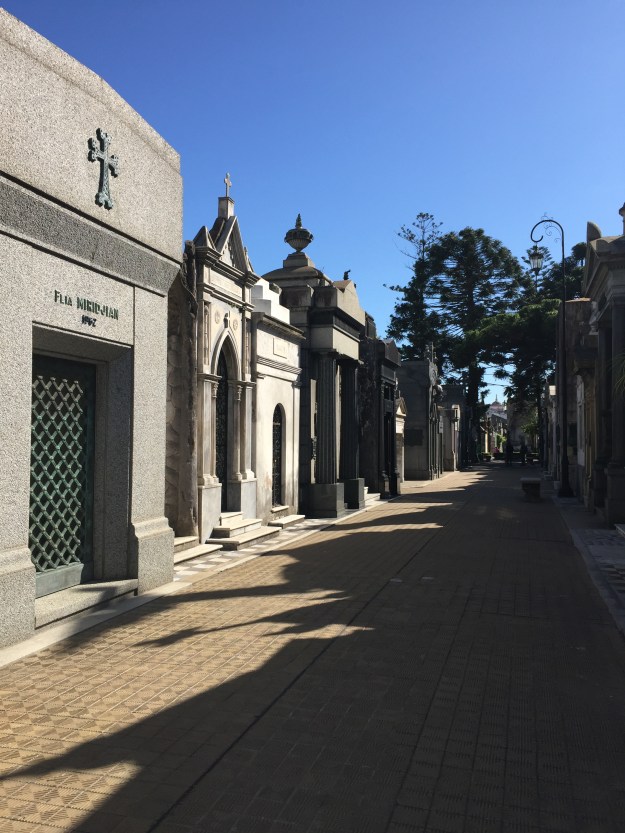
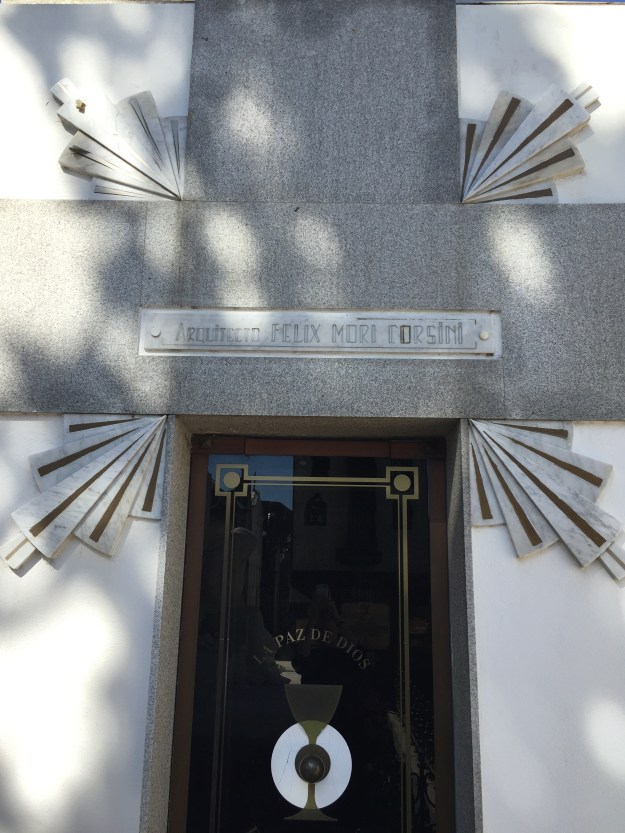
(I like how that architect made sure he had a wine glass on his Deco crypt.)
Even Eva Peron’s grave:
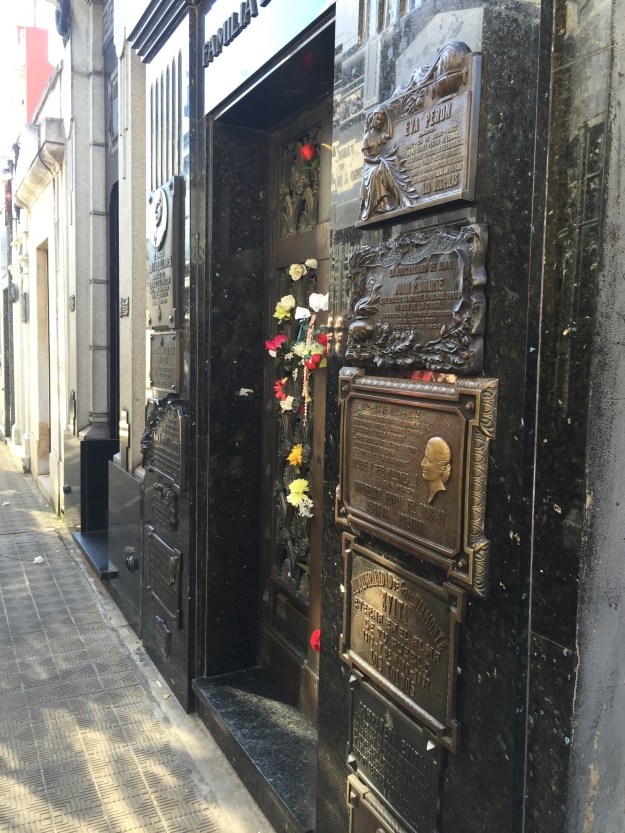
The Recoleta is quite a sight, and a great way to creep out any 14-year-old you might be traveling with.
Our guide was telling me that the previous Argentine president had forced international companies like Ralph Lauren and Chanel to plow their profits back into Argentina, so they up and left. Which actually benefitted someone like me who was looking for locally-made products to take home. It’s almost impossible to find souvenirs anywhere that aren’t made in China anymore.
At the store called “Ayma” in the Palermo Soho district (1565 Armenia St.), there are weavers in the workshop upstairs, using 18th century looms to make gorgeous, soft fabrics out of Argentine llama, alpaca and merino.
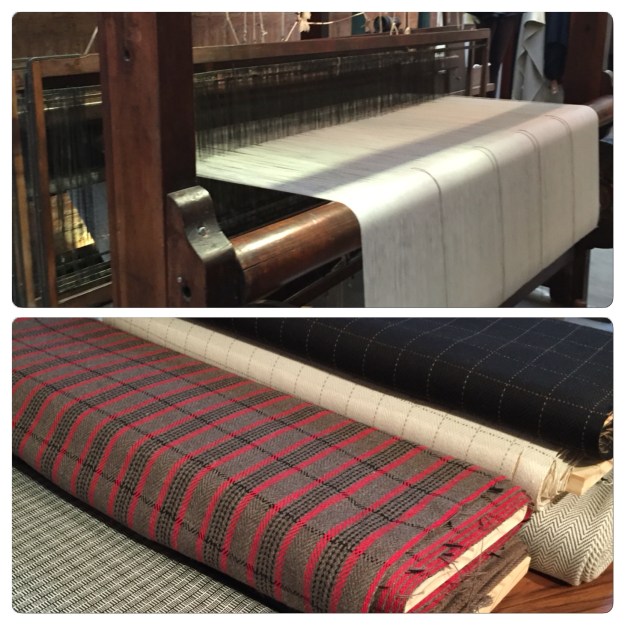
As tempting as the fabrics were, handwovens are very difficult to sew (they tend to unravel – and fast), so I went the lazy route and bought a pre-made wrap in the traditional asymmetrical Argentine style. The fabrics were a little more modern and not as rough-hewn as I’d seen in other shops.
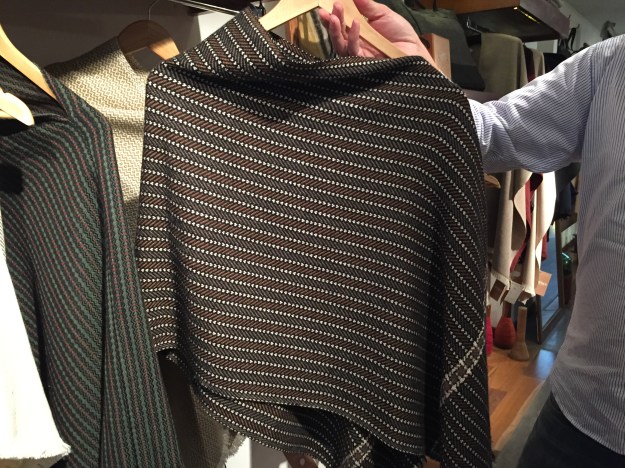
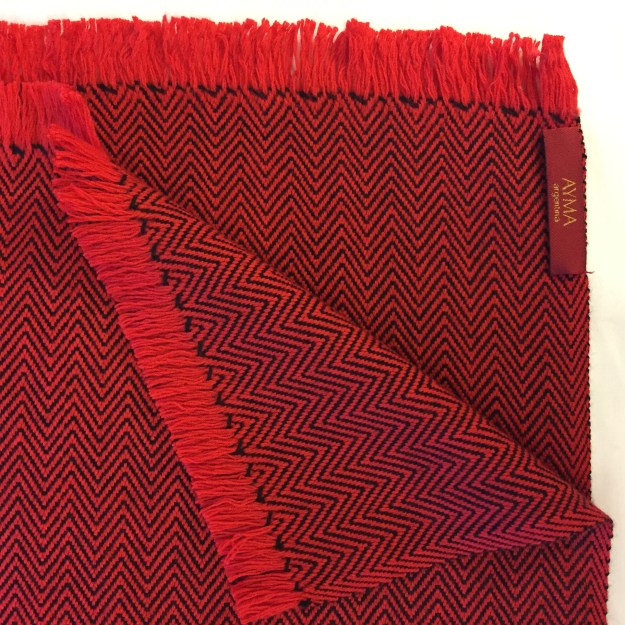
(Believe me, we were enjoying the strong dollar to Argentine peso throughout the trip.)
You can find things made with Argentine leather all over the place, But I liked the goods at the polo/gaucho store Arandu (1920 Ayacucho St. in the Recoleta district).
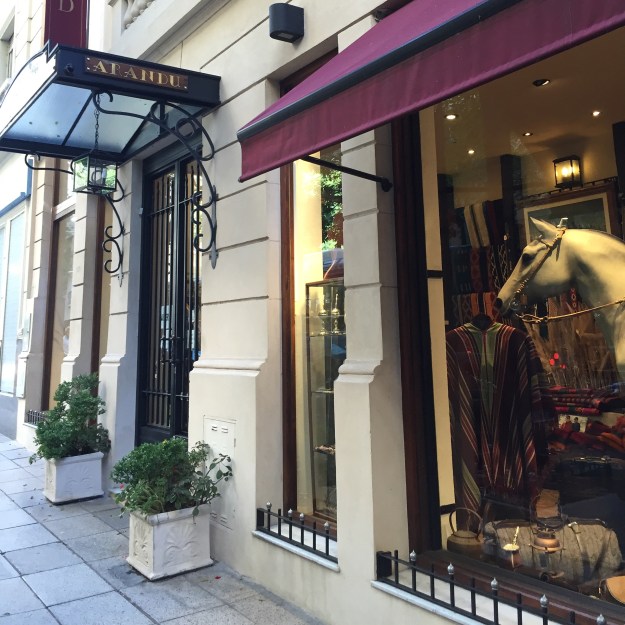 They carry traditional silver, woven ponchos and sashes, and bags from soft, waterproof “carpincho” leather that looks like a combination of ostrich and nubuck. (They tell you it’s “otter,” but it’s actually from a giant indigenous furry rodent and that’s about all you really want to know.)
They carry traditional silver, woven ponchos and sashes, and bags from soft, waterproof “carpincho” leather that looks like a combination of ostrich and nubuck. (They tell you it’s “otter,” but it’s actually from a giant indigenous furry rodent and that’s about all you really want to know.)
As for the huge slabs of beef, they exist in the traditional restaurants, so it’s a good thing that my doctor is an Argentine ex-pat who’ll understand the spike in my cholesterol. But B.A. is full of modern hipster restaurants as well. My foodie husband said he liked most of the meals we had there, which is the equivalent of giving a Michelin star in his world.
And as for my son:
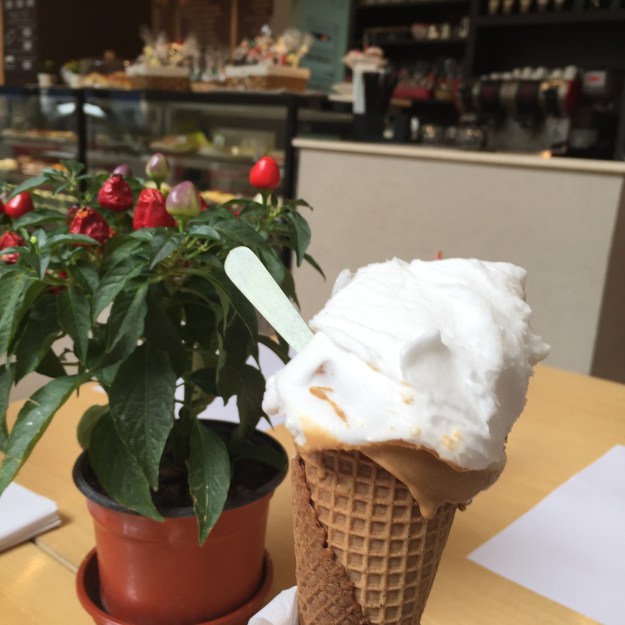 The gelato ruled! Meanwhile, I was checking out the pattern magazines from Argentina and Spain.
The gelato ruled! Meanwhile, I was checking out the pattern magazines from Argentina and Spain.
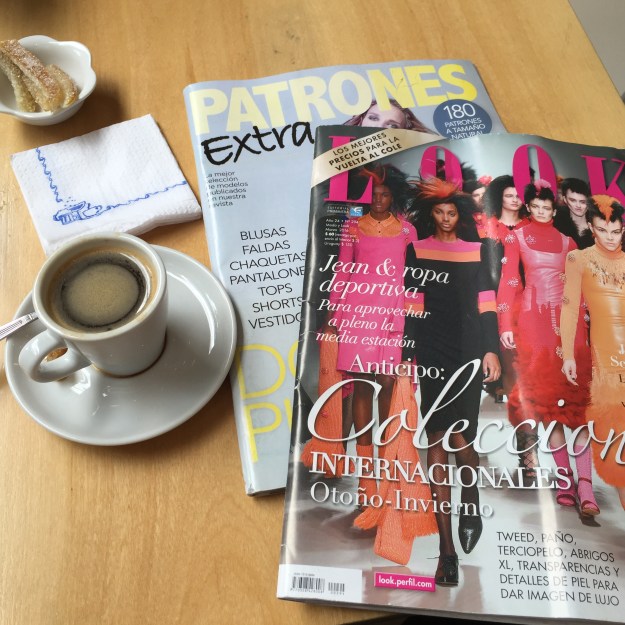
There’s one “textile” memory I’ll take with me from this pleasant trip. One night, we were having dinner at a traditional parrilla (a restaurant with the aforementioned slabs of beef cooked on a fire), sitting outside at a sidewalk table. The “Fair Winds” of the city’s name, which I experienced as balmy breezes, were a little more refreshingly cool than usual, so I was offered a thickly-handwoven alpaca blanket that I put on my lap. A minute or two later, it started sprinkling rain, so the staff hustled our table under a canopy. Sitting there in cool, damp air, but feeling the warmth of that soft, natural fiber so skillfully woven, I almost felt like I was holding hands with the artisan who made it.
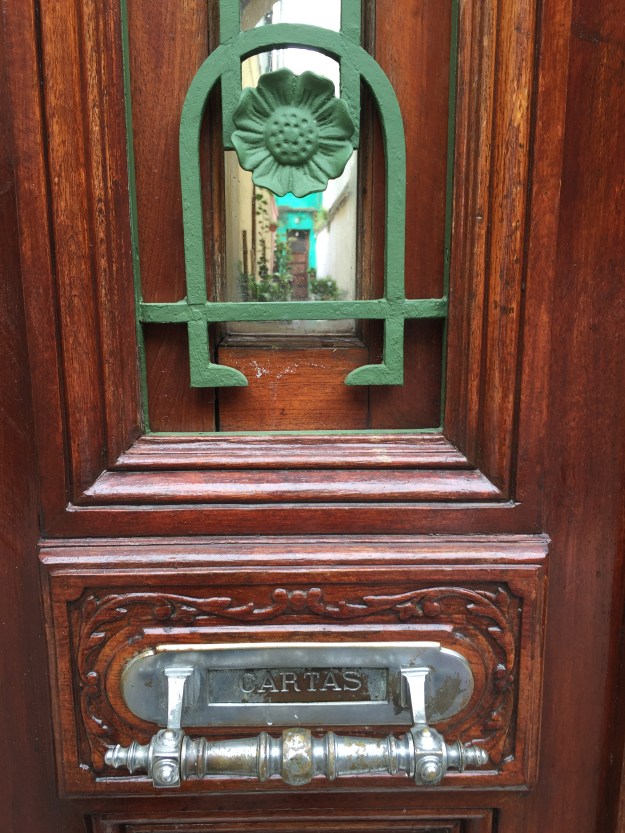
I most certainly will be back!
Hope your sewing’s going well.
Thank you for sharing your wonderful trip. I do go there from time to time but only have 10-12 hours off and only see the hotel room and airport.
Not much sewing; the sew room is a mess. Hoping to get back to sewing some vintage soon as I am knitting vintage sweaters in hopes of coordinating.
Happy Holiday weekend.
I noticed that the shop Ayma has a small outpost at the airport, so maybe you can find some handwovens there next time.
Fab tour – thank you! Have never had any interest in visiting south of the border, as I’m not keen on heat & humidity, associated flora & fauna. What impressed me in your tour was the cleanliness of the streets, and the lack of crowds. So glad you got to the opera. Wonder who was singing. Used to be all great European singers went there rather than too provincial America. Shame about the fabrics, but am certain you came home with some lovelies we’ll see more of in the future. Happy holiday weekend!
Actually, since B.A. is quite southerly, the climate is kind of like North Carolina, except the season are flipped. As for the opera, we were seeing a Sunday morning show of a “New Tango” music (a tango/jazz hybrid) that was excellent. It was the Guillo Espel Cuarteto with guest singer Agus Voltta – who reminded me of k.d. lang.
Perfect – tango in Argentina!
Really enjoyed your tour, thanks! Mr JSS did select some stunning buttons, can’t wait to see how you are going to use them!
A great excuse to get Karl working on some buttonholes, don’t you think?
Thank you for all the great photos and suggestions. Isn’t fabric/trim shopping around the world fun! I’ll certainly be on the lookout for some of those locally woven fabrics which sounded wonderfully soft and luxurious. Any projects planned for those trims and buttons?
It was a wonderful visit and the hotel was great. I’m having culture shock being back! The Obamas probably are, too, though we stayed away from the parts of town where they were hanging out. As for the trims and buttons – my first project is figuring out a better way to store my notions as they’re getting lost in the closet!
Thank you for the wonderful trip, felt like I was there!
I really enjoyed sharing it. What wonderful place!
Very interesting to hear about your trip. I live in Cadiz in Spain and the ‘haberdashers’ are very similar to the ones you described. Much better than England. Would love to get my hands on those leather trimmings and buttons!
So many tempting things in that shop! I now have my own haberdashery in my closet.
So many fabulous memories are resurfacing as a result of this post! So lovely to see you having such a wonderful break 🙂 Love the photos!
You’re entering a different world traveling with your little one! It’s still fun to go adventuresome places with them, though.
Thanks for all the amazing photos of interiors. BA certainly does look like the Paris of the Southern Hemisphere. I would love to see that bookshop!
I was wishing I could ditch the family and hang out there myself!
Well, you’ve convinced me that a trip to Buenos Aires should be in my future. And I may make your husband my button agent.
I’m sure he’d be more than willing to kibbitz about the buttons via Instagram. I hope you get a chance to go!
Well that was fun! Where will you take us next?
After all of that running around, I’m sticking close to home! My Bernina, Karl, was at the “spa” getting cleaned and oiled while I was gone, so now we’re raring to go on some sewing projects.
A fun review. We went too, fairly recently, so enjoyed some of the same things – tango, beef, the same cafe. I thought your comment – like European cities but super sized was spot on. It was disappointing to see so many heritage buildings with political graffiti. And the ice-cream really is good, isn’t it. Love your buttons.
I think Europeans are more familiar with B.A. than we are in the States. Our guide talked a lot about how politically active the Argentines are – so graffiti is part of the culture. But apparently legitimate artists can repaint buildings just with the owner’s permission, so there’s a mixed bag of street art all over the place. It’s such an interesting culture.
Finding those vintage buttons was worth the price of the trip in my world!! Looks like you had a wonderful time! Welcome home…
Thanks Karen! I think looking for buttons is the perfect excuse to go anywhere in the world.
What a beautiful city! I especially loved the theatre and the cemetery. I’m a lover of art nouveau and art deco as well, and appreciate all of the details the past artisans put into their buildings. What a wonderful trip! Also, that’s a good tip on the hand woven textiles. I have several ruanas that my grandparents got in Venezuela and have considered using the fabric to refashion into something else, but now I think they may just fray too fast to be repurposed in such a way.
Thanks, and yes, I’d only cut fabric like that if I’d stabilized it first with several rows of zigzags or some kind of fusible on the seam.
What a lovely travelogue and yet another fabulous place to add to my ever-growing list. Thanks for sharing the images and so much more. I’m anxious to see what you and Karl come up with next!
You’re welcome! Karl is eager for me to get the laundry done and get going on a new project.
Hey Julie! I feel like I have traveled to B.A. now! Great photos, 2 of which I saved to my desktop-the multi-color seltzer bottles and lovely multi-color embroidery – I am working on a color presentation for Spring 2017 for McCall Patterns…I will credit you of course! Penny Payne, Fabric & Notions Editor.
Oh, and I loved the Art Deco Buckles too…want to see what you do with those…Penny Payne
So nice to hear from you, Penny! I’m more than happy to let my photos be a part of your presentation. I hope spring is coming your way in NYC – still pretty chilly up here.
Oh Argentina! I loved there for 3 wonderful years as expats and let me tell you: I found only one fabric store with good fabrics (italian mostly). I didn’t like Once district a bit: the fabric was terrible and the area was not safe (at least during my years there). The store was located in Palermo, way far from the tourist sites. Buenos Aires is the most enchanting city in the whole world (I even got an argentinian daughter!!!!) Your pictures are great!
It’s a wonderful place! I hope to go back someday.